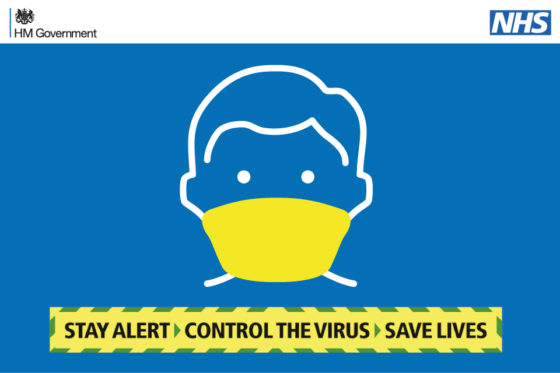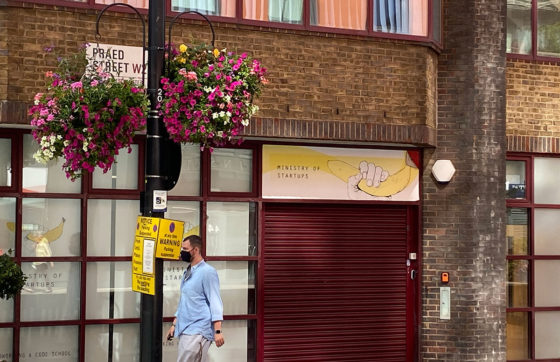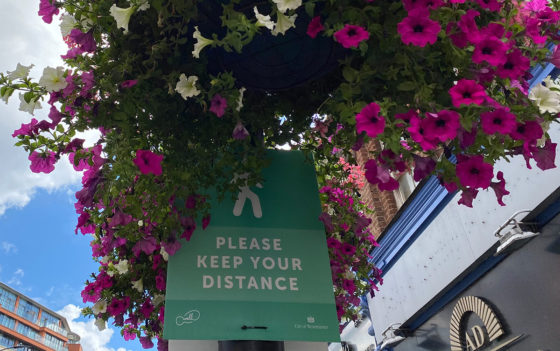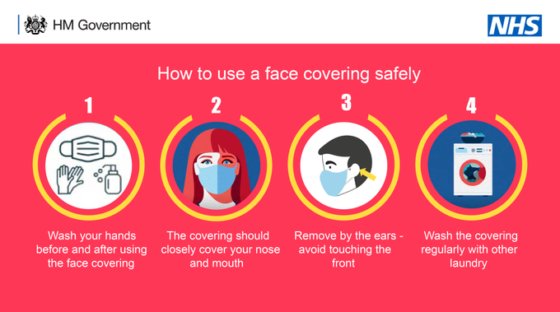It is now mandatory to wear a face covering on all public transport and in shops, including supermarkets, indoor shopping centres, banks, building societies and post offices.
All Londoners should wear a face covering in enclosed spaces where they can’t keep a safe distance (2 metres) from others.
Why wearing a face covering helps
‘Yours protects them and theirs protects you.’
Face coverings help by catching the small droplets we sometimes spread when we talk or cough. These can contain coronavirus (COVID-19) and land on surfaces and other people. This can be an issue if someone has the virus, but no symptoms. By wearing a face covering you protect those around you and they protect you by wearing theirs.Remember, if you feel unwell you should stay at home and book a test.Face coverings are not the same as Personal Protective Equipment (PPE) or medical face masks, those are used in very specific circumstances like health and care settings.
Who should and shouldn’t wear one?
The Government has made it mandatory to wear a face covering on all public transport and in shops in England. If you can wear a face covering but choose not to then you may be given a fine or refused entry/service. There are some people who should not wear a face covering, they are:
- people who have trouble breathing
- children under 3 years old (there are certain exceptions based on age, for example, under 11s do not need to wear a face covering on public transport, read the Government guidance)
- anyone who finds it difficult to manage them correctly, for example if you have a disability.
Young children should have adult supervision when wearing a face covering.
How to make your own face covering
Face coverings should be reusable and can be made from materials in your home – you just need to make sure you have enough fabric to cover from the top of your nose to the bottom of your chin.Watch the video for tips on how to make your homemade face covering.
Wearing and washing your face covering safely
It is important to remember that even if your mouth and nose are covered the infection can be spread on your hands.Always wash your hands for at least 20 seconds with soap, when you get home and before and after handling your face covering in any way. Avoid touching your face, nose, mouth and eyes at all times.If you are using a single-use face covering, please ensure you dispose of it safely in your black bag rubbish at home if possible. Never litter your face covering or gloves. This puts other people at risk, especially refuse collectors and street cleaners.Remember that wearing a face covering is not a substitute for washing your hands frequently, and keeping at least 2 metres from others.
Putting your face covering on
Wash your hands. Don’t touch your face or face covering with unwashed hands or gloves. Put the covering on without touching the front of the covering, and ensure loose ends are tucked away when you have it on.Taking your face covering off
Remove your face covering trying not to touch the front or face covering area. When you have removed it, store it in a plastic bag until you have an opportunity to wash it. Make sure you wash your hands for at least 20 seconds with soap after handling your face covering.Washing your face covering
Face coverings can be washed as part of your laundry and using your normal detergent.Make sure you wash your hands after handling a used face mask and avoid touching your face and eyes. Once removed make sure you clean any surfaces the face covering has touched.
For the full government guidance please press here.



